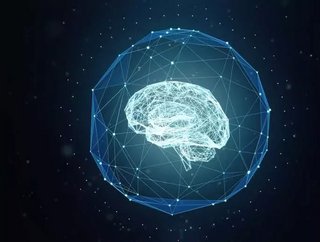Virtusa xLabs: Collaborative intelligence – the student becomes the master

It’s hard to move these days without hearing about machine learning.
The idea of teaching machines to handle tasks that previously could only be done by humans is creating huge disruption across virtually every industry. But what if machines could not only learn, but teach? While this concept previously seemed far-fetched, it is now very much a reality. We are now on the verge of a new, collaborative intelligence, where we move beyond machine learning and into the realm of machines teaching one another without human intervention. We’ve already seen examples of how advanced AI has become, with DeepMind trouncing the best human players at StarCraft II – notable since it requires the AI to operate with incomplete information and react in real-time to surprising developments.
The fact that AI can now master complex strategy games, and not just operate as an advanced data processing tool, is remarkable. It shows that algorithms can now learn almost entirely by self-play, sidestepping the need for human training, data or guidance. The logical next step is that AI-powered machines will become their own teacher, transforming countless industries and technology strategies forever.
All-important AI
The move to machine teaching is hugely significant considering the way that AI has stormed onto the scene in recent years, with customer service chatbots or AI sentiment analysis by marketers quickly becoming part of our daily lives. Practically overnight, AI-powered start-ups catapulted onto lists of most valuable companies, seducing customers and investors alike and, in 2017, Google declared it was moving from a mobile-first to an AI-first strategy.
AI is essential to businesses, with many companies using the technology to improve customer understanding, automate routine processes, carry out financial analysis and more. However, these benefits are almost exclusively enjoyed by larger corporations as the highly-skilled engineers required to train and power AI machines can be costly, shutting smaller businesses out and limiting AI’s ability to truly transform business.
SEE ALSO:
-
SAP acquires Contextor SAS to upgrade robotic automation and machine learning capabilities
-
SnapLogic Data Science set to accelerate deployment of machine learning models
-
Google launches new AI hub to make it easier for firms to access benefits of machine learning
The development of machine teaching could really change this, as not as many human experts will be required for the proper functioning of AI machines. This will help democratise AI more across a range of industries, enabling smaller companies, that were previously unable to afford to run AI-driven machines, to compete with larger enterprises.
Tracking not teaching
However, although AI-powered machines teaching themselves can save a lot of manpower and automate simple tasks that will free up staff to focus on driving business value in other areas, it won’t be a panacea. Companies still have plenty of work to do if they are going to get value out of machine teaching and they don’t have long to prepare before it moves into the mainstream and they get left behind.
Firstly, and most importantly, companies will need to develop a clear strategy and plan for how and where in the business self-teaching AI machines can be used and how it supports the organisation’s goals. Without identifying and testing areas where AI-powered machines can offer benefits and understanding how its use can be scaled up from there, businesses could bite off more than they can chew and risk stalling or abandoning programmes entirely.
Another area to keep in mind is monitoring the machines to ensure their activity isn’t going off on a tangent. Though the machines may not need any human intervention to operate or carry out their functions, businesses will still need to employ AI-experts so that the activity can be decoded and altered if needs be. Ultimately, machine teaching or collaborative intelligence is a very imminent reality and whether it bursts into the business mainstream this year or next, companies need to be ready for the next frontier of AI-powered machines. From large to small, firms need to understand how machine teaching will change their AI strategy.
What does the future hold?
The relationship between machines and humans when it comes to AI learning and teaching is expected to give rise to huge breakthroughs in performance capabilities. This will have wide-reaching implications for business, as collaborative intelligence sidesteps the need for human interference – making AI-driven machines a possibility to a whole host of new businesses that previously couldn’t afford the manpower. Just as machine learning has translated into multi-billion dollar industries, so too will collaborative intelligence. It is the next leap forward, and it is happening now.
- OpenText’s Muhi Majzoub: Engineering Platform Growth with AIEnterprise IT
- OpenText CEO Roundtable: The Future of Safe Enterprise AIDigital Transformation
- OpenText AI: Empowering Businesses in Information ManagementDigital Transformation
- Microsoft in Japan: $2.9bn Investment to Boost AI & CloudCloud & Cybersecurity






